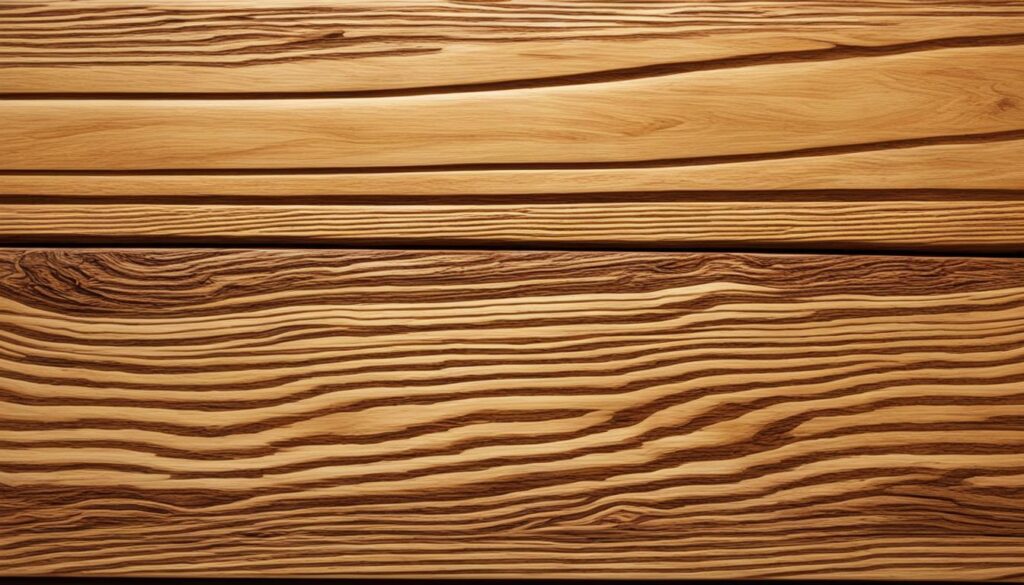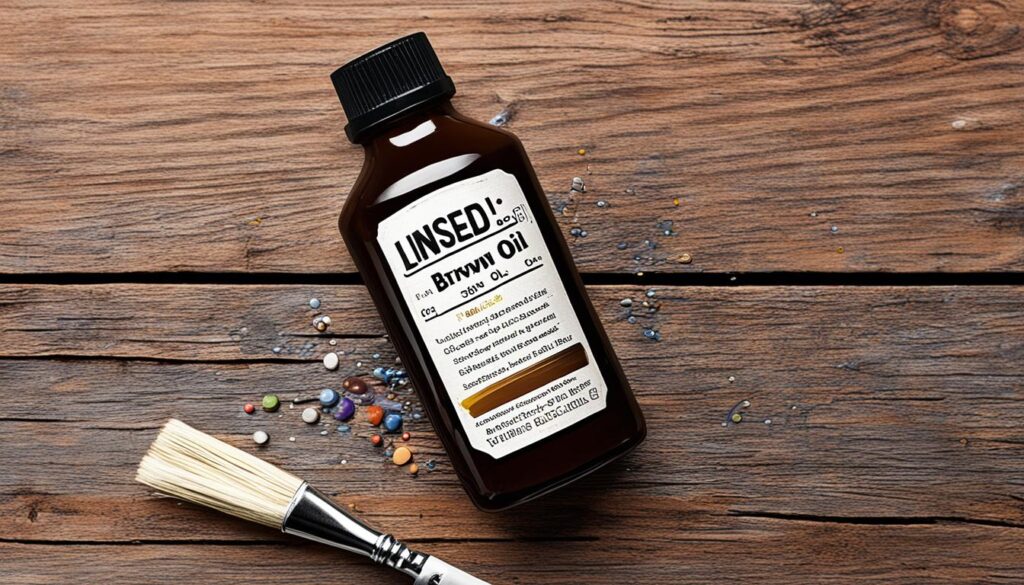Using linseed oil on your deck can enhance its natural beauty and provide eco-friendly, non-toxic protection. It improves moisture resistance and offers UV protection, helping to prevent mold and mildew growth. However, linseed oil offers limited durability and requires frequent reapplications, typically every 6-12 months. Its modest protection against water and scratches may not be sufficient in harsh climates. Proper preparation, including cleaning and sanding, is essential for effective application. Regular maintenance is necessary to preserve the deck’s longevity. To discover more detailed information on how to maximize the benefits and minimize the drawbacks, continue exploring further.
Preparing Your Wood Deck for Treatment
Properly preparing your wood deck for treatment is essential to guarantee ideal adhesion and longevity of the protective coating. Effective wood deck maintenance begins with a thorough cleaning process. Remove all furniture and planters from the deck surface. Employ a deck cleaner to eliminate dirt, grime, mildew, and existing stains. Allow the cleaner to sit for 10-15 minutes, then scrub with a stiff brush. Rinse thoroughly with a garden hose or pressure washer, ensuring all cleaner residue is removed. Allow the deck to dry completely for 1-2 days before proceeding.
Sanding or stripping is essential for decks previously coated with solid stains or paint. Use 60-80 grit sandpaper on an orbital sander to remove old coatings and smooth the wood surface, always sanding in the direction of the wood grain. For semi-transparent stains, lightly sand according to the new stain’s instructions. Following sanding, apply a wood brightener if recommended to open up the wood pores.
Understanding Decking Oil Treatments
After preparing your wood deck for treatment, understanding the benefits and application techniques of decking oil treatments is the next essential step. Decking oils, including linseed oil, are specifically formulated to penetrate deeply into the wood grain, providing essential nourishment and exterior wood protection.
One of the major linseed oil benefits is its ability to enhance the natural wood finish, emphasizing the grain and imparting a warm, rich appearance.
For effective deck maintenance, linseed oil application should be done in thin, even coats using a brush, roller, or pad, ensuring the oil follows the wood grain. This outdoor wood treatment not only beautifies but also weatherproofs the deck, offering protection against water damage, UV rays, and general weathering.
Although linseed oil is a safe linseed oil for decks and is eco-friendly, it does necessitate more frequent reapplication, typically on an annual basis.
Despite these maintenance requirements, decking oils allow the wood to breathe and prevent issues such as peeling or flaking, which are common with film-forming finishes.
For top wood finishing results, it’s essential to allow the wood to fully dry and to clean the surface before applying the oil, ensuring long-lasting exterior wood protection.
Benefits of Using Linseed Oil on Decks
Enhancing the natural wood appearance, linseed oil offers a range of benefits that make it an attractive option for treating and protecting wood decks. As a plant-based, natural wood preservative, linseed oil enhances the wood grain and color, providing a warm, rustic aesthetic that allows the wood’s inherent beauty to shine through. This makes it a favored choice for linseed oil deck finishing and deck staining, preserving the wood’s texture rather than obscuring it.
In terms of exterior wood care, linseed oil excels due to its eco-friendly and non-toxic properties. Extracted from flaxseeds, it is biodegradable and free from harsh fumes or volatile organic compounds (VOCs), making it safe for decks where children and pets are present.
For deck protection, linseed oil penetrates deeply, nourishing and safeguarding the wood from within. It offers weatherproofing wood benefits by making surfaces water-resistant and providing protection against UV damage. Its natural antifungal properties also help in preventing mold and mildew growth. Additionally, linseed oil supports the wood’s natural ability to breathe and expand without peeling or cracking, ensuring long-term wood protection.
Easy application and maintenance further enhance its appeal for outdoor wood care. Reapplication is straightforward: simply clean and re-oil the deck annually or as needed for the best deck weatherproofing.
Potential Drawbacks of Linseed Oil Treatments
While linseed oil offers numerous aesthetic and eco-friendly advantages for wood decks, it also presents several drawbacks that homeowners should take into account. One of the primary linseed oil disadvantages is its limited durability. Unlike varnishes or polyurethane finishes, linseed oil provides minimal protection against scratches, dents, and impacts, leading to durability concerns. Over time, the finish can become sticky or gummy, attracting dirt and dust.
Maintenance requirements present another significant challenge. Linseed oil finishes necessitate frequent reapplication, typically every 6 to 12 months, to maintain a fresh appearance. Without regular maintenance, the wood can appear dry and lackluster, highlighting the wood finish disadvantages associated with this treatment.
Application challenges further complicate the use of linseed oil. Raw linseed oil takes several weeks to fully dry, while boiled linseed oil dries faster but may cause allergic reactions. Additionally, applying too many coats can result in an uneven, blotchy appearance.
Linseed oil also offers limited protection against UV rays, water, and mildew growth, making it less suitable for high-use surfaces. Potential health hazards include the risk of spontaneous combustion of application rags and the toxicity of certain drying agents. These linseed oil limitations underscore the importance of careful consideration before opting for this treatment.
Applying Linseed Oil on Your Deck
Properly applying linseed oil to your deck involves a meticulous process to guarantee ideal absorption and protection. Begin with thorough surface preparation: clean the deck by pressure washing or scrubbing with a deck cleaner to remove dirt, grime, and mildew. Make sure the wood is fully dry, typically taking 1-2 days. If there is any existing solid stain or paint, remove it entirely through sanding or using a deck stripper. For new or heavily sanded decks, perform a water test to confirm proper oil absorption.
For best results in deck sealing and outdoor wood treatments, use boiled linseed oil, which contains drying agents for faster curing. Start by thinning the first coat of boiled linseed oil with mineral spirits or turpentine (50/50 ratio) to enhance penetration. Apply this mixture generously with a brush, rag, or roller, following the wood grain. Wipe off any excess after 30-60 minutes and allow 24-48 hours for drying. Subsequently, apply a second, undiluted coat in thin, even layers, again removing any excess and allowing 24-48 hours to cure.
For continuous outdoor wood maintenance and outdoor wood protection, reapply linseed oil annually, especially when the wood appears dry. This method serves as an effective deck staining alternative, enhancing natural wood finishes and providing exterior wood treatments.
Sanding Your Deck Before Treatment
Sanding your deck before treatment is a crucial step to guarantee excellent adhesion and finish quality. This critical aspect of wood deck preparation ensures the deck surface is free from imperfections and old coatings, allowing the new treatment to penetrate and bond effectively.
Begin by thoroughly cleaning the deck through pressure washing or using a specialized deck cleaner to eliminate dirt, grime, and mildew. After the deck surface cleaning, let it dry for 1-2 days. Inspect your deck for any loose nails or screws and secure them, filling any holes or cracks with exterior wood filler.
For deck sanding, use an orbital floor sander designed specifically for deck refinishing, as belt sanders can cause damage to the soft wood. Start with 60-80 grit sandpaper to remove old finishes and smooth the surface. Avoid using sandpaper grits higher than 100, as they can close the wood grain, hindering the treatment’s absorption. Employ a palm sander or sanding block for tight spaces, corners, railings, and steps.
Consistent sanding in the direction of the wood grain is one of the key deck sanding tips to ensure an even finish.
Maintenance and Reapplication of Linseed Oil
Maintaining your deck’s finish with regular reapplication of linseed oil is essential to preserve its beauty and longevity. Linseed oil application plays an important role in deck maintenance, ensuring continuous wood deck protection and enhancing the natural wood finishes.
Signs that indicate the need for reapplication include the wood looking dry, faded, or weathered, water no longer beading on the surface, or the wood being easily scratched. Typically, linseed oil reapplication is recommended every 6-12 months.
Preparation is key to effective exterior wood treatment. Begin by thoroughly cleaning the deck, either by pressure washing or using a deck cleaner, to remove dirt and previous finishes. Allow the wood to dry completely for 1-2 days. Lightly sand the surface with 120-150 grit sandpaper to open the wood pores, ensuring better absorption.
Conduct a water test; if water absorbs quickly, the wood is ready for a new coat. During deck refinishing, use boiled linseed oil mixed 50/50 with mineral spirits or turpentine for improved penetration. Apply thin coats with a brush, roller, or rag along the wood grain, allowing each coat to absorb for 30-60 minutes before wiping off excess.
Let each coat dry for 24-48 hours. For effective wood deck care and weatherproofing wood, apply 2-3 coats, ensuring thorough wood deck restoration.
Welcome to WoodCraftYard.com, your one-stop destination for all things woodworking! I’m Oliver Candler, a dedicated woodworking aficionado and the creative mind behind this virtual woodworking haven. With a deep-rooted love for craftsmanship and a keen eye for detail, I am on a mission to share my passion for woodworking with fellow enthusiasts like yourself.
As a seasoned woodworker, I am committed to providing you with valuable insights, practical tips, and inspiring project ideas to help you unleash your creativity and master the art of woodworking. Whether you’re a seasoned pro or just starting out on your woodworking journey, join me as we carve, sand, and saw our way through the world of woodworking together.
Let’s embark on this woodworking adventure, where every knot, grain, and finish tells a unique story. Together, let’s craft, create, and build something truly extraordinary at WoodCraftYard.com!


